Estimated reading time: 6 minutes
In most disaster scenarios, you can survive without lights, weapons, and air conditioning. For a while, anyway. But you definitely can't survive without food. And the thing about disasters is they're almost always a surprise.
Don't be caught without any food when the next one strikes. If you start building your emergency food stockpile now, you'll be way ahead of most people, and you won't have to panic next time a hurricane is bearing down on your city.
Want to save this post for later? Click Here to Pin It On Pinterest!
If you have a food stockpile, you need to make sure it lasts. There are many people out there who shove food in the back of the cupboard or closet and forget about it until a disaster strikes. When that happens, they get their food out and discover that half of it has gone bad. What a waste!
Don't let that happen to you. Here is how to make your emergency food last as long as possible.
1. Follow the HALT method
HALT stands for Humidity, Air, Light, and Temperature. These four factors are everything when it comes to stockpiling food. If you can control them, you can make some food last for decades.
- Humidity – Keep it as low as possible by not putting your food in rooms that tend to be humid, such as the kitchen, the laundry room, the garage, or anywhere outside.
- Air – Seal your food in airtight containers with oxygen absorbers in order to keep as much air away from your food as possible (more on that in the next sections).
- Light – Store your food in opaque containers boxes, buckets, Mylar bags, inside dark closets, and anywhere else that isn't exposed to life. Remember, even indoor lighting can shorten your food’s shelf life.
- Temperature – The ideal storage temperature is 50 to 70 F (10 to 20 C). If you live in a place like the southern United States with hot summers and cold winters, you’ll need to make sure your food isn't affected by these changes. If, however, you live somewhere with mild temperatures throughout the year, you won't have to worry as much.
So, according to the HALT Method, you should store your food in a dry area, inside airtight containers, out of the light, and in a place with cool, stable temperatures.
Store your food in…
- Bedrooms
- Indoor pantries
- Dark closets
Don’t store your food in…
- The attic
- The garage
- Damp basements
- Outdoor sheds
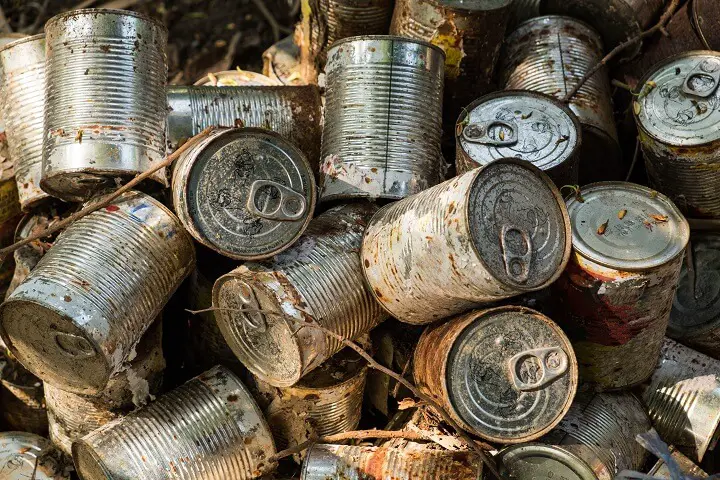
2. Use Containers that Have a Good Seal
Mylar bags can make certain foods last for up to 30 years. These light-proof bags come in many sizes so you can store all kinds of food. They range from a pint to 6 gallons, with the most commonly used size being the 1-gallon bag. Each Mylar bag comes with an oxygen-absorbing packet to keep your food fresh.
You can significantly extend the shelf life of foods like beans, rice, grains, pasta, and many others. For example, beans and rice usually last about 2 years. Put them in a Mylar Bag with oxygen absorbers and they'll last up to 30 years!
Here's how to use them. Let’s say you’re storing a big bag of rice.
- Use a Sharpie to label your bag with the type of food date of storage.
- Fill your bag most of the way with rice, leaving some space at the top.
- Throw in at least one oxygen absorber.
- Use a heat source such as an iron to seal the top of the bag.
- Find somewhere with the right conditions (remember HALT) to store your bags.
Some preppers take it a bit further by putting their Mylar bagged food into food-grade five-gallon buckets. This isn't absolutely necessary, but it can definitely help, and it makes it a lot easier to move your food from place to place if you have to. If you decide to use buckets as well, use a heavy mallet to secure the lid in place.
If you have any oxygen absorbers left over, you can save them in a Mylar Bag or mason jar so they don't absorb too much oxygen and stop working.
Mason Jars are perfect for canning fruits, veggies, jams, jellies, sauces, soups, and so forth. Here's a list of other things you need before you start canning food.
When you store Mason Jars, there are a few elements to take into consideration…
- Light – Because Mason Jars are made of glass, light can easily get onto your food and lower the shelf life. As I said above, a dark and cool place is ideal to get the longest shelf life possible.
- Rotation – A lot of food gets wasted because people put it in the back of the closet or pantry and forget about it. Then when they need it, it's already gone bad. Don't make that mistake! Follow the rule of “first in, first out” and keep an inventory of your canned food.
3. Find Out Which Foods Store Best
Once you're ready to start stockpiling food, think about the ones that would last a long time without any special storage techniques. Sugar, for example, will last indefinitely. Other foods that last for years include candy, pasta, hardtack, wheat berries, dried beans, white rice, and more.
For more ideas, here's a list of foods that last for decades. And believe it or not, there are some foods/ingredients that can literally last forever. For example: salt, honey vinegar, maple syrup, and more.
By the way, don't just store these foods because they last for so long. Make sure they're foods and ingredients that you'll actually eat or use in recipes. Otherwise, you'll be stuck with a bunch of foods that you hate during the next disaster, and that will not be good for morale.
And another thing, always calculate when your food should go bad and write that date somewhere on the bag or container, that way you'll know which ones to open first.
If you follow these three tips, you'll get the maximum shelf life out of your food. And knowing that will give you peace of mind. Enjoy the process and have fun with it.
Like this post? Don't Forget to Pin It On Pinterest!



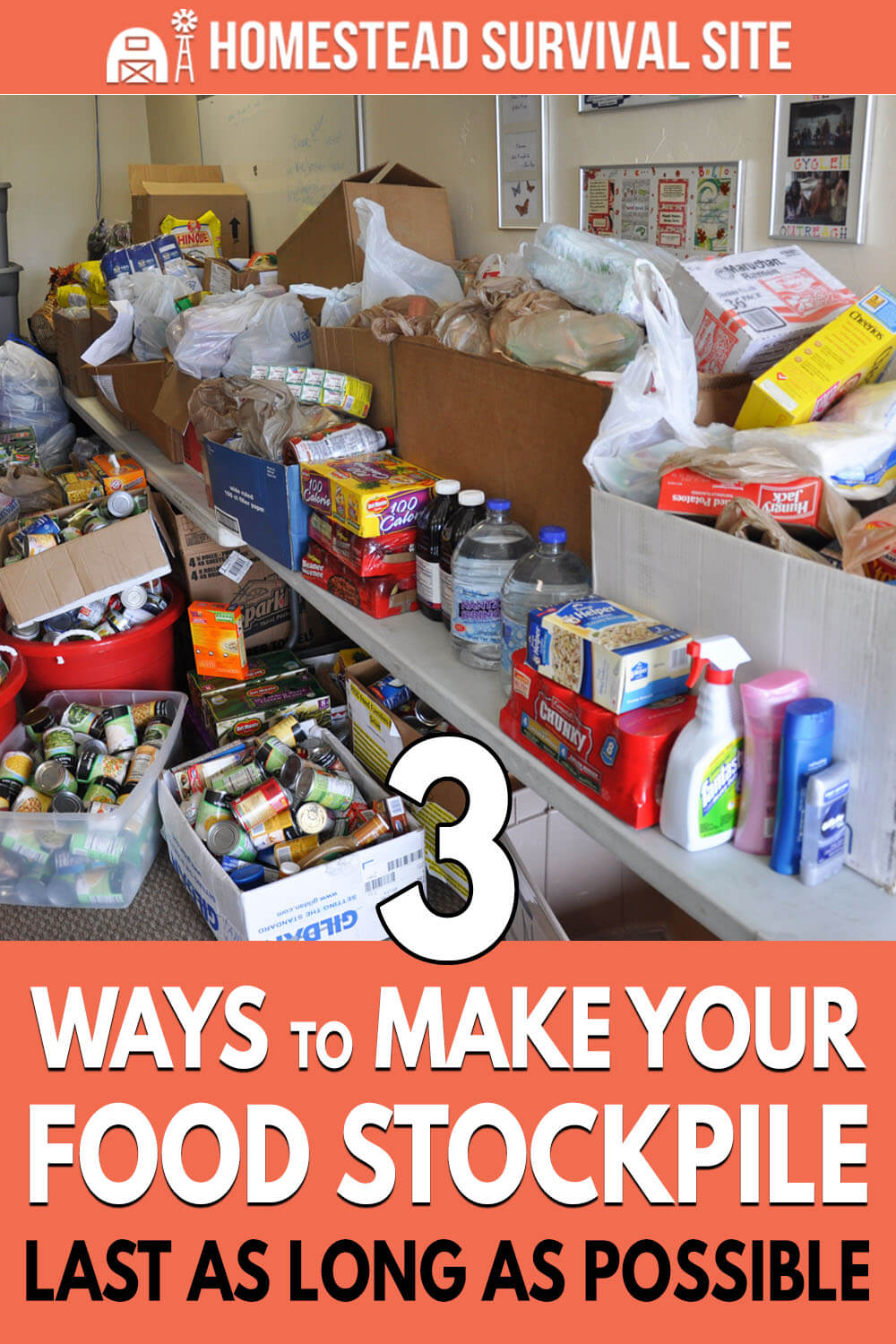

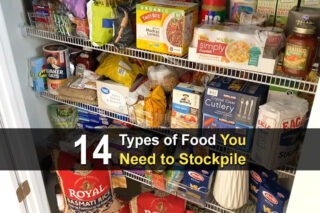
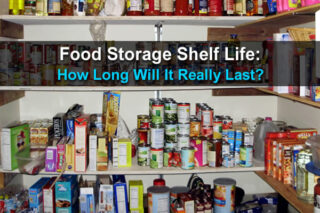

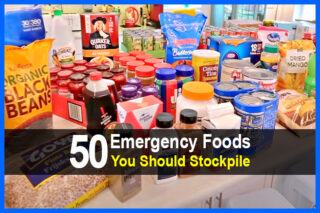




Honey, like sugar, does not spoil either and it is 100% better for you than plain sugar. Only downside it is more expensive than sugar. To me it is well worth the extra money.
Wheat, stored properly will last at least 4000 years. Wheat, found in the Egyptian pyraminds germinated. Wheat is cheap to buy in bulk (mormon warehouse) and you can buy a good electric grinder for 2 to 3 hundred dollars. Hope this helps someone.
Personally I like the Lehmans catalog. They have all kinds of meats, pickeled vegetables, jerky, nuts and old-fashioned candies. They also have machinery that was used back in the1800’s. Hand opperated, cranked turned machinery for grinding your own grains into flour, coffee grinders, water filters, herbal remedies, wood cutting equipment for making lumber, firewood
Oil lamps wood fired stoves. Everything one would need to have to survive in a SHTF type of situation. They don’t sell anything that uses electricity to power it. Its all human powered, designed for people who want to live simpler lives and in emergency situations where power is not available. They have something for everyone. They have everything needed to live comfortably in a simpler style of life and for those who live off the grid. They have everything that your grandmother would be familiar with when she was growing up. These are tried and true tested methods of preserving food and living a simpler style of life with some modern amenities.
I really enjoy these episodes . This helps me to understand why we as humans need some one to teach us . I don’t believe the end of the world is near but, I do believe that the world is in for a surprise .
Excellent article.
Some things that I would add to the list are:
1) Always keep your eyes out as part of your situational awareness when you are out and about for future sources of food. Prepared, raw, and wild.
2) Never wait until you are nearly out of stored food before seeking out additional foods.
3) Even if you cannot have a full garden right now, do grow anything and everything you can, even if it is in containers, inside for sure, and outside if at all possible. The items do not have to be major sources of food. Even growing herbs will help a person prepare for getting their hands dirty working in a real garden. Add a miniature lemon, orange, or banana tree as well. Look up indoor air quality enhancing plants and grow a few of those throughout the house.
4) Obtain and securely store gardening tools, equipment, and supplies. Make sure all metal tools are protected with oil or some other type of anti-rust method.
5) Store as many non-hybrid, non-GMO, open-pollinated seeds as you can, but with regular seeds as inexpensive as they are, especially at the end of the gardening season, stock up plenty of those, as well. Even though they do lose germination vitality when stored for extended times, if one germinates them individually in germination trays, and only plants those that do germinate, then even 10% germination will produce quite a bit of food.
And, seeds produced by hybrid plants, while they will very seldom reproduce true to the hybrid, it is common for one of the original plants used to create the hybrid to be dominant, and the seed will produce that plant. It might be a valid producer, even if not up to the quality of the hybrid, but still edible. Or, it might not be.
I believe, in order to conserve the open-pollinated, non-hybrid seeds, that it is better to use all of the hybrids up first, and the seeds they produce until they are no longer a valid option. Then go to the open-pollinated, non-hybrid seeds. Do not risk cross-contaminating these seeds with the hybrids by growing both at the same time. If anyone else in the area is growing hybrids, be very careful about growing your non-hybrids. If, by whatever means, your seeds get pollinated by the hybrids, the resulting seeds from your plants may not be true to the original plant.
6) While you might not be planning on raising any type of stock animals, just as you do for plant foods, keep an eye out for both the signs of small stock, as well as large stock animals in your area. While it is not likely to find large stock in the city, such as cattle and swine, if there is a college in town that has agricultural classes, there is a chance that they have some barns and pastures still within, or very close to the city, especially if the city grew up around the place.
However, it is surprising how many people have rabbits, and even chickens in or close to cities. So, keep an eye out for those possibilities, as well. With aquaponics becoming more and more popular, home greenhouses with fish tanks are a possibility as well. Make note of greenhouses anyway, for their plant food options, but be aware that some might also have fish. Look for garden shops, of course, for general gardenng supplies, but there are some specific hydroponic and aquaponic greenhouse stores beginning to open up. They would be a great source of information now, and might be able to connect you with people already having successful operations.
Now, something of a disclaimer. I am suggesting finding these places now. I am not suggesting that when things go bad that you become a raider. What I am suggesting is that if you can make arrangements now with these people to provide some type of good or service that they might need in the future for a share of their production, then you have a good chance of getting at least some additional food when you need it, later. And if worst comes to worst, and they do not survive whatever happens, then you will have what you need to know to either operate at their location, or move things to yours. Only, however, if there is no chance that a person that has a legitmate claim on the goods and property is still around. I do not believe in any form of looting. I do believe in conserving resources for a community.
Just my opinion.
Our diets will change a lot in a survival situation,so will our bowel habits. A good supply of laxatives and stool softeners will come in handy.